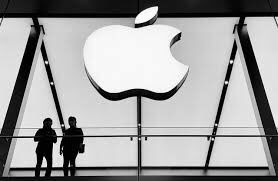
When we talk about premium gadgets, Apple is the first thing that comes to our mind. A company possessing profound knowledge of consumer needs and innovation, Apple has proven to the world that no other tech company is endowed with enough calibre to outshine it. Despite such expensive pricing, Apple manages to sell over 400 iPhones
every 60 seconds! This exceptional performance is backed by their indigenous marketing strategies and has helped them to become the world’s largest company with a valuation close to $3 trillion. Let’s understand how Apple has succeeded in fabricating enormous brand value and has made people blindly drain money for it.
Iconic Consumer Experience
Apple has been able to steal consumers from other tech companies on the back of its iconic consumer experience. Apple products are known for their focus on aesthetic minimal designs which has worked extensively in attracting consumers. Presentation is everything and it is very well understood by Apple. Not only simple and sleek designs, but the services provided by the devices have also managed to make the life of consumers much easier. Indeed, the maximum number of consumers are now being attracted by the aesthetic presentation and high-quality user interface.
The Decoy Effect
In marketing, the decoy effect is a strategy whereby consumers tend to alter their preferences between two options when presented with an asymmetrical dominating third option. The third asymmetrical option is often inferior to one option in the majority of the aspects and partially dominates the other. In simple words, the third asymmetrical option acts as a decoy between the two main products and tricks the consumer into thinking that the most expensive deal out of the three is the best option available.
In the case of iPhone models:
iPhone 14- $799
iPhone 14 pro- $999
iPhone 14 pro max- $1,099
According to this scenario, the iPhone Pro acts as a decoy. If someone has decided to buy an iPhone Pro, why wouldn’t he pay an extra 100 bucks to get the best version of it? Using this technique, Apple has extensively pushed its consumer base to increase the average spending on its products.
Anchoring Effect
One of the challenges Apple encountered was how to present its expensive product prices. The solution to this problem was taking advantage of the anchoring effect. Apple used this strategy to uplift the sales of the $4999 ProXDR display. Before describing any of the Pro XDR display’s features, the company mentioned the number $43000. Sometime later, just before revealing the actual price, the number $43000 was displayed on the screen again.
$43000 didn’t represent the XDR display’s cost, it was the price of a SONY reference monitor. So why was a SONY reference monitor’s price displayed at an Apple event?
Reference monitors were a new category Apple was competing in and by showing the exacerbated price of SONY’s monitor, Apple meant to define the expectations of the consumers that the XDR display would not be cheap!
But astonishingly, the price turned out to be only $4,999. Although it was five times the price of its predecessor model, no one’s attention was on the huge jump in price. It was in the place where Apple wanted it to be. People started seeing Pro XDR Display as a much cheaper alternative to professional reference monitors. Based only on the pricing, consumers started loving Apple’s display. They forgot to check how competitive the Pro XDR display would be to the professional reference monitors(the XDR display didn’t match the efficiency of the professional displays). This is what the anchoring effect means. Apple successfully enlarged its brand value with this strategy and portrayed itself as a premium brand in the market.
Bundle strategy: AppleOne
Apple has successfully improved its subscription service sales with a prominent marketing tool known as the ‘bundle strategy. AppleOne is a subscription service which provides access to all the subscription services by Apple available at certain prices. This bundling has helped tempt customers to utilise more services and reduce the subscription rate. Services such as Apple Arcade and Apple News which do not possess many audiences can create a better consumer base with this bundling strategy. The popularity of services such as Apple Music and Apple TV with the help of these bundles makes consumers buy all the services available at a lower price. Gradually, the revenue generated from services is increasing.
Today, service segments contribute to 22% of the total revenue generated and are expected to increase as Apple is gradually evolving from a service-based company to a product-based company. They have understood that the domination of product design will gradually decline due to the saturation of distinct models in the market. The service segment will lead the market sentiments soon pushing Apple to fulfil the consumer’s expectations.
The great marketing strategies of Apple have helped them grow its market exponentially. Mastering the art of marketing is not achieved by all and Apple has successfully overpowered all of its competitors. But the competition in the market is increasing and market competitors Huwieu and Samsung have emerged as prominent rivals of the tech giant. With the current shift in demands of the consumers and the level of competition increasing, will Apple be able to sustain its monopoly over the technology sector? or will it perish gradually at the hands of the very consumers who glorified it?
Author – Tejas Agarwal
Welham Boys school






